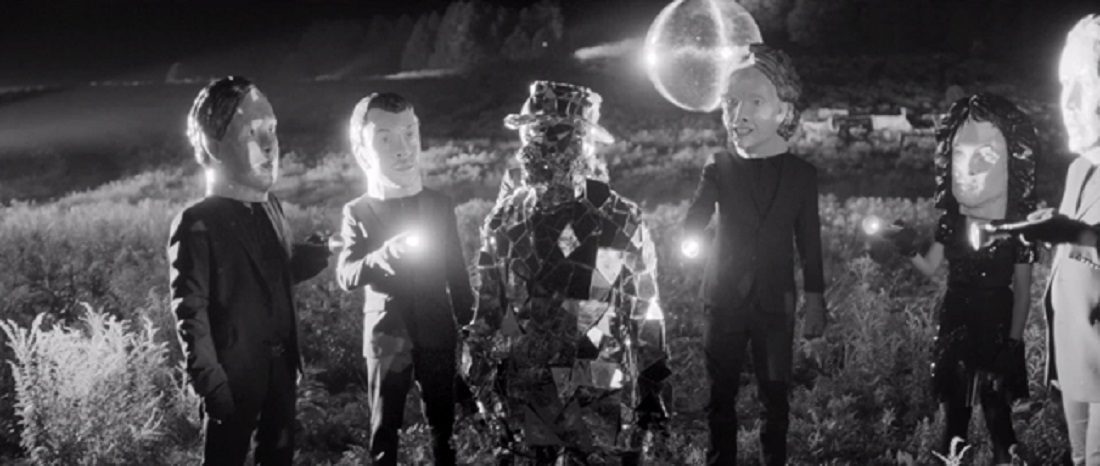
Despite conspicuously broadening the instrumental range of their albums and going through a battalion of members since the outset of its career, Arcade Fire has retained many of the themes that defined Funeral, the band’s first album, just over nine years ago. Reflektor–which came out on October 29th, 2013–features churning, string-heavy verses that build up to high-energy choruses, overachieving lyrical themes, and a general sense of bleakness juxtaposed with lush, orchestral instrumentation–all hallmarks of Arcade Fire’s previous work. In addition to this, though, Reflektor dials the role of electronic instruments way up on this album and brings the drum beat further into the foreground, creating a kind of driving pulse to back nearly every track.
Die-hard Arcade Fire traditionalists, fear not. All changes work in service to the band’s sound. By trading out some of their former graininess in favor of strong, eighties-inspired beats on tracks like “We Exist,” Arcade Fire heightens the drama behind devastating, cyclical chants–“You’re down on your knees, begging us please, praying we don’t exist/But we exist. We exist. We exist”–and adds an epic, mythical quality to the anxiety that’s always been behind the group’s songs. Arcade Fire seems to have achieved, with this album, a more expansive take on instrumentation, and they’re operating with every tool they’ve got.
Canadian husband-and-wife duo Win Butler and Régine Chassagne, the two founding members of Arcade Fire still in the band, continue to sing duet on many of the tracks of this album. Their call-and-response style provides a familiarity that’s even more satisfying after listening to the farther-out passages of Reflektor. David Bowie–who also put out a new album in 2013– lightly graces the album’s title track with his vocal stylings, amping up the album’s grandness. The theatrics aren’t disconcerting; they feel like the logical result of Arcade Fire’s career up to this point.
Does the album feel, at any point, over-doctored? Well, with any band that’s seen this many members, there’s a case for the too-many-cooks-in-the-kitchen argument. Many styles appear on this album, interweave, stop on a dime and melt into each other. There’s a lot going on here. But all ends of the spectrum are fully explored, every idea gets sussed out and masterfully articulated. The hypnotic final track, “Supersymmetry,” lives up to its name with an elegant and ambient chorus of strings and electronic instruments, perfectly balanced and weaving benevolently around each other. The last artist I can think of to put forth this kind of ambition in a record, and to pull together so many disparate styles and negotiate them into harmony with each other, is Kanye West on his 2013 album Yeezus.
There’s an example of the kind of balance I mean right at the beginning of “Here Comes The Night Time,” the first thirty seconds of which alone are worth the price of the album. The song begins with the ambient sounds of people talking, maybe somebody kind of half-heartedly playing a drum beat far away. Then, the real drum beat kicks in, and the track immediately jumps from kind of a lazy ambivalence into frenetic, siren-wailing, powerhouse rock and roll. Then, not fifteen seconds later, everything kind of slows and backslides into a sultry, bass-heavy rhythm that takes us into the first verse. It’s one of the many airtight phrases on Reflektor, flawlessly coordinated and immediately engaging.
[fusion_builder_container hundred_percent=”yes” overflow=”visible”][fusion_builder_row][fusion_builder_column type=”1_1″ background_position=”left top” background_color=”” border_size=”” border_color=”” border_style=”solid” spacing=”yes” background_image=”” background_repeat=”no-repeat” padding=”” margin_top=”0px” margin_bottom=”0px” class=”” id=”” animation_type=”” animation_speed=”0.3″ animation_direction=”left” hide_on_mobile=”no” center_content=”no” min_height=”none”][retweet][/fusion_builder_column][/fusion_builder_row][/fusion_builder_container]


